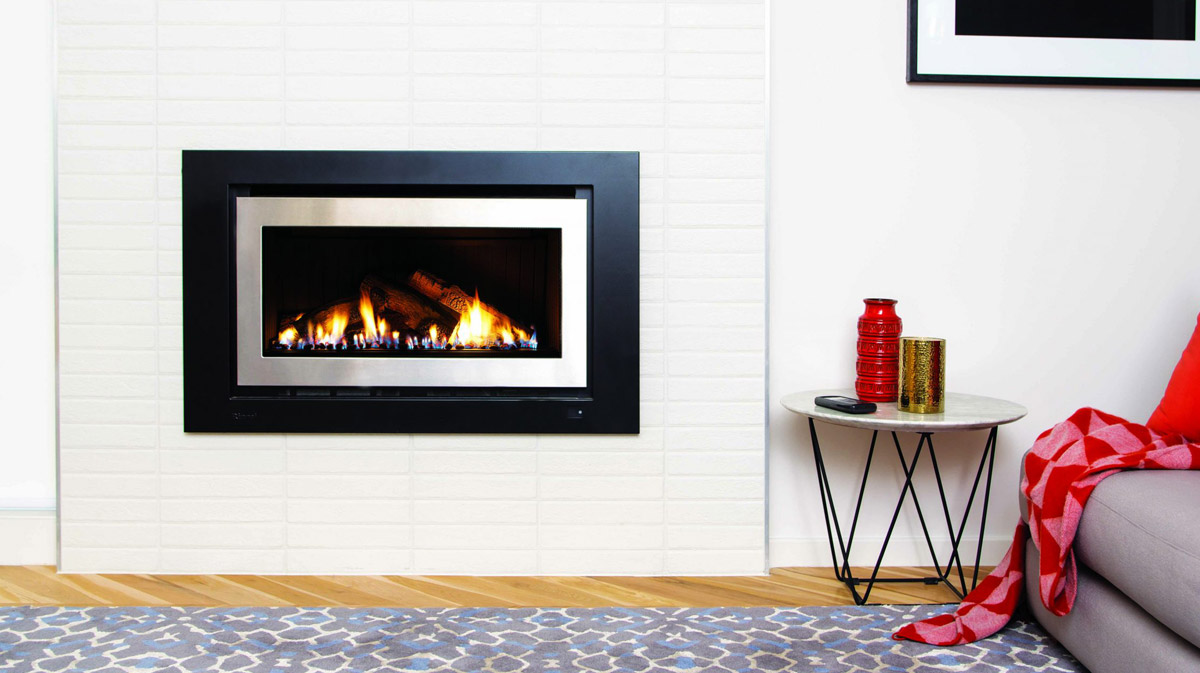Gas Heater Safety
Gas heaters are a popular choice for efficiently and affordably warming indoor spaces. They are specifically designed to produce heat by burning natural gas or propane, providing a convenient heating solution for both residential and commercial settings. However, it’s essential to understand the potential risks associated with using gas heaters indoors to ensure the safety of your loved ones and property.
While gas heaters offer many benefits, including being cost-effective and producing instant warmth, improper use or ignoring safety precautions can lead to hazardous situations. The main risks of using gas heaters indoors revolve around carbon monoxide poisoning, potential gas leaks, and fire risk.
Carbon monoxide, a colourless and odourless gas, can accumulate rapidly if the ventilation is insufficient, leading to life-threatening health issues. Gas leaks from faulty connections or equipment can also pose a risk, increasing the chances of explosions or fires. Additionally, improper placement or operation of gas heaters can result in accidental fires, especially in crowded or enclosed spaces.
Ultimately, to ensure the safe use of gas heaters indoors, following manufacturer guidelines, having proper ventilation in place, installing carbon monoxide detectors, and regularly maintaining and inspecting the heating equipment is crucial. By understanding and addressing these potential risks, you can confidently enjoy the benefits of gas heaters while prioritizing the safety of your indoor environment.
Are Gas Heaters Safe for Indoor Use?
Yes, gas heaters, when used indoors, are safe, but they require careful handling and adherence to safety guidelines. The primary risks involve carbon monoxide (CO) poisoning, oxygen depletion, and fire hazards. Within Australia, gas appliances meant for indoor use undergo safety testing. This testing applies to:
- Power flued appliances: A fan expels exhaust gases and air outside.
- Natural draught flued appliances: A chimney pulls gases upwards and out.
- Unflued appliances: They release exhaust gases and air back into the room.
Rooms with flued systems need constant ventilation to the outside. Gas instant water heaters should not be placed in bathrooms or poorly ventilated spaces unless they are ‘room sealed’.
What is an Unflued Gas Heater?
An unflued gas heater, also known as a ventless or flueless gas heater, is designed to operate without a chimney or external venting system. This design allows the heater to release combustion products, including water vapour and carbon dioxide, directly into the room where the heater is located. Unflued gas heaters can be safe for indoor use if certain safety precautions are followed, but they also carry inherent risks due to their design:
- Ventilation: These heaters release combustion products, including moisture, carbon dioxide, and potentially harmful gases like carbon monoxide and nitrogen dioxide, into the indoor environment. Adequate ventilation is crucial to disperse these by-products.
- Regular Maintenance: To minimize risks, regular maintenance and servicing are essential to ensure the heater functions correctly.
- Carbon Monoxide Risk: The risk of carbon monoxide (CO) poisoning is a significant concern. It’s vital to have a functioning CO detector in the room.
- Room Size: These heaters are generally safe in larger, well-ventilated areas. Smaller, poorly ventilated spaces pose greater risks.
- Legal Regulations: In some regions, there are strict regulations or even bans on using unflued gas heaters due to the potential health risks.
- Health Impact: People with respiratory issues or allergies might be more affected by the combustion by-products.
What is carbon monoxide poisoning?
Carbon monoxide is a colourless and odourless gas that is produced when fuels such as gas, oil, coal, and wood are burned incompletely. When inhaled, carbon monoxide displaces oxygen in the bloodstream, leading to a condition called carbon monoxide poisoning.
Inhaling carbon monoxide can have severe health effects, ranging from mild symptoms such as headaches, dizziness, nausea, and fatigue to more severe symptoms like confusion, loss of consciousness, and even death. Certain individuals, such as infants, the elderly, and people with respiratory problems, are particularly vulnerable to the harmful effects of carbon monoxide.
Gas heaters can be a potential source of carbon monoxide if they are not functioning properly or if there is inadequate ventilation. The combustion process in gas heaters produces carbon monoxide, and if the exhaust gases are not effectively expelled, they can accumulate indoors, leading to a dangerous concentration of carbon monoxide.
It is essential for anyone using gas heaters indoors to be aware of the dangers associated with carbon monoxide poisoning. Recognising the symptoms of carbon monoxide poisoning and knowing the necessary precautions can help prevent life-threatening situations.
By understanding the risks and taking necessary safety measures, you can enjoy the warmth and comfort of gas heaters without compromising your health and safety.
How much ventilation does a gas heater need?
Ventilation refers to the process of exchanging indoor air with fresh outdoor air. It helps remove pollutants, moisture, and odours from your living space. In the case of using gas heaters indoors, proper ventilation becomes even more critical as it helps dissipate the harmful byproducts of combustion.
Gases such as carbon monoxide (CO) can accumulate without proper ventilation and reach dangerous levels indoors. Carbon monoxide is an odourless, colourless gas that can pose severe health risks, including poisoning and even death. Therefore, ensuring adequate ventilation is crucial to prevent the buildup of harmful gases.
In addition to ventilation, proper air circulation is necessary when using gas heaters indoors. Adequate air movement ensures uniform heat distribution throughout the room and helps prevent stagnant pockets of polluted air.
When a gas heater operates in an area with insufficient air circulation, the combustion process may not be as efficient as it should be. This inefficiency can lead to incomplete combustion, causing the release of higher levels of toxic gases.
Potential Risks of Insufficient Ventilation and Accumulation of Harmful Gases
Insufficient ventilation and the accumulation of harmful gases, such as carbon monoxide, can result in serious health risks. Exposure to high levels of carbon monoxide can lead to symptoms like headaches, dizziness, nausea, confusion, and even loss of consciousness.
Furthermore, prolonged exposure to carbon monoxide can cause irreversible damage to a person’s vital organs, including the brain and heart. In extreme cases, it can be fatal. Therefore, it is crucial to ensure proper ventilation and avoid the buildup of this toxic gas when using gas heaters indoors.
To prevent these risks, it is recommended to have a well-ventilated area where gas heaters can operate safely. This includes ensuring the presence of functional windows or vents and avoiding the use of gas heaters in enclosed or poorly ventilated spaces.
- Always keep windows or doors partially open to allow fresh air to enter and maintain proper air circulation.
- Avoid using gas heaters in bedrooms or bathrooms, as these areas typically have lower ventilation.
- Regularly check and clean your gas heater’s vents and exhaust system to ensure proper airflow.
- Consider installing carbon monoxide detectors in your home for added safety.
Following these precautions and prioritising ventilation and proper air circulation can significantly reduce the risks of using gas heaters indoors.
What should you do if you smell gas?
If there is a strong or unusual gas smell, it’s important to act quickly and cautiously to ensure safety:
- Do Not Ignite Anything: Avoid using matches, lighters, or any electrical switches, including turning lights on or off. These actions can trigger an explosion if there’s a high gas concentration.
- Ventilate the Area: Open doors and windows to allow fresh air to circulate and help disperse the gas.
- Turn Off the Gas Supply: If you can safely access the gas meter or control valve, turn it off to stop gas flow.
- Evacuate the Premises: Leave the area immediately. It’s better to be safe and avoid the risk of gas accumulation.
- Report the Leak: Once you’re in a safe location, call your gas company’s emergency line or local emergency services. Do not use your phone near the area where you smell gas, as it can be an ignition source.
- Do Not Return: Stay away from the affected area until professionals have given the all-clear.
- Do Not Attempt Repairs: Qualified gas fitters should only handle gas leaks.
Fire Hazards and Safety Measures
Gas heaters can pose fire hazards if not used and maintained properly. Understanding the potential risks associated with gas heaters and taking necessary safety measures to prevent accidents is essential.
If not handled correctly, gas heaters can be a potential ignition source for fires. Some common fire hazards associated with gas heaters include:
- Gas leaks
- Improper installation
- Overheating
- Electrical malfunctions
These hazards can result in fires, leading to property damage, injuries, or even fatalities. It is crucial to be aware of these potential risks and take necessary precautions.
Improper usage and placement of gas heaters can significantly increase the fire risk. It is essential to follow manufacturer instructions and guidelines to ensure safe usage.
Some common mistakes that can contribute to fire risks include:
- Using the heater near flammable materials
- Blocking the heater’s ventilation system
- Leaving the heater unattended for a long time
- Using damaged or faulty heaters
By avoiding these improper practices, you can reduce the chances of fire accidents and ensure the safety of your indoor environment.
Keeping Flammable Materials at a Safe Distance
One of the critical safety measures to prevent fires caused by gas heaters is to keep flammable materials at a safe distance. Flammable materials include curtains, furniture, papers, and other combustible items.
Maintaining a minimum distance of three feet between the heater and any flammable materials is recommended. This distance allows proper air circulation and reduces the risk of ignition.
Always be mindful of the surroundings and ensure no flammable materials are near the gas heater. This simple precaution can significantly enhance the safety of using gas heaters indoors.



